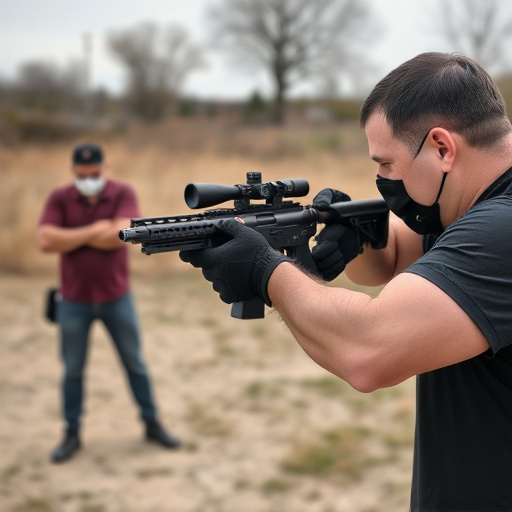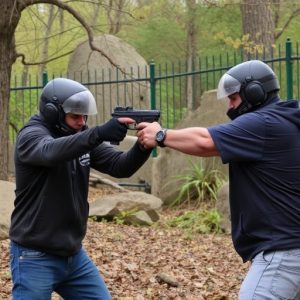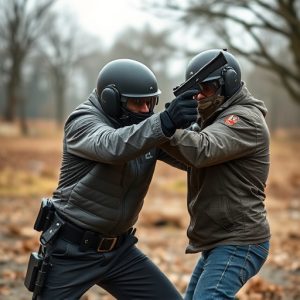Neuromuscular Effects and Rating Stun Gun Stopping Power
The neuromuscular effects of stun devices, driven by electrical charges disrupting nerve impulses, i…….
The neuromuscular effects of stun devices, driven by electrical charges disrupting nerve impulses, induce muscular spasms and temporary paralysis. This rapid response provides users critical time to escape or seek help. The effectiveness, measured by stopping power ratings, depends on voltage, pulse width, and target area size. Selecting a stun gun with optimal neuromuscular effects requires considering these factors for specific self-defense needs.
“Uncover the true potential of stun guns through a lens of scientific understanding. This article delves into the Neuromuscular Effects of Stun Devices, exploring how these tools temporarily disable opponents. We dissect the critical factors shaping stun gun stopping power ratings, providing insights beyond raw voltage. From muscle paralysis to loss of balance, discover what makes a stun device effective on the street. By understanding these neuromuscular impacts, users can make informed decisions when it comes to self-defense.”
- Understanding Neuromuscular Effects of Stun Devices
- Key Factors in Determining Stun Gun Stopping Power Ratings
Understanding Neuromuscular Effects of Stun Devices

Stun guns operate by impairing an assailant’s neuromuscular functions, leading to temporary incapacitation. The devices deliver an electric current that disrupts nerve impulses and causes muscular spasms, significantly reducing an individual’s ability to move or fight back. This rapid and intense reaction is what makes stun guns effective self-defense tools.
The neuromuscular effects of stun devices can be understood as a complex interplay between the electrical charge and the body’s natural systems. The current interferes with nerve signals, causing muscles to contract uncontrollably. This disruption can lead to loss of balance, disorientation, and even paralysis in extreme cases. These effects are designed to subdue an attacker quickly, providing users with crucial time to escape or summon help.
Key Factors in Determining Stun Gun Stopping Power Ratings

The determination of stun gun stopping power ratings involves a complex interplay of factors, with a primary focus on the neuromuscular effects of stun devices. These effects are crucial in neutralizing an attacker’s ability to cause harm. The intensity and duration of the shock delivered by a stun gun play a significant role in its effectiveness; higher voltage and longer pulse widths generally result in more pronounced neuromuscular incapacitation, leading to a quicker and more complete loss of muscular control.
Additionally, the target area of application is critical. Stun guns designed for use on larger muscle groups, such as the legs or torso, tend to have different stopping power ratings than those aimed at smaller, more delicate areas like the hands or face. The size and resilience of these muscles affect how quickly they can recover from the shock, impacting the overall effectiveness of the stun device. Understanding these key factors helps users make informed decisions when selecting a stun gun that best suits their self-defense needs.
The neuromuscular effects of stun devices, as explored in this article, play a pivotal role in understanding their stopping power. By examining key factors like voltage output, contact area, and duration of discharge, we can gain insights into the effectiveness of these devices. These ratings are crucial for individuals seeking self-defense options, allowing them to make informed choices based on specific needs. When considering stun guns, it’s essential to weigh these stopping power ratings alongside other safety features and personal preferences to ensure a well-informed decision.


